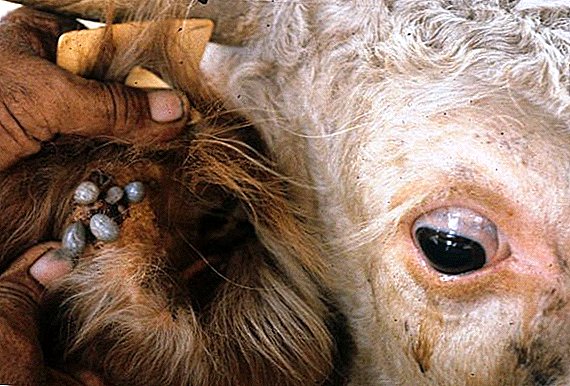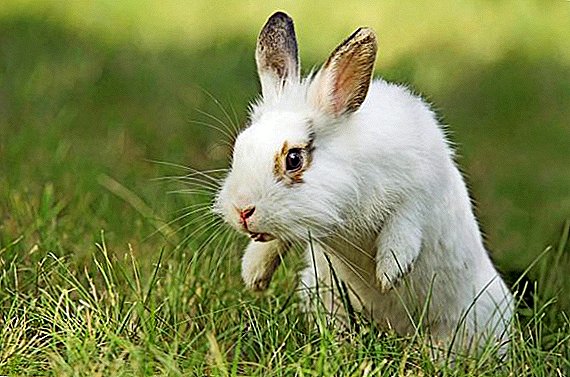 Today, even a child knows how dangerous the disease is with the eloquent name "rabies". The virus instantly enters the blood after the bites of infected animals, so when dealing with them, it is advisable to make sure that vaccinations are available, even if it is a home decorative rabbit. Like the rest, these animals are susceptible to the disease, which means that they can become its carrier and lead to the death of a person. The rate of progression of the disease depends on its stage, so it is important to be able to recognize the very first signs of the disease.
Today, even a child knows how dangerous the disease is with the eloquent name "rabies". The virus instantly enters the blood after the bites of infected animals, so when dealing with them, it is advisable to make sure that vaccinations are available, even if it is a home decorative rabbit. Like the rest, these animals are susceptible to the disease, which means that they can become its carrier and lead to the death of a person. The rate of progression of the disease depends on its stage, so it is important to be able to recognize the very first signs of the disease.
Do rabbits suffer from rabies
Despite the fact that these eared animals suffer from rabies much less frequently than other animals, this possibility cannot be ruled out.
It is enough that the rabbit is bitten by an infected animal and the virus has entered the bloodstream, after which the development of the disease will not take long to wait. It does not have to be a cat, a dog, or any wild animal, because even bats often act as carriers of the disease. The rabbit can get infected by other pets. In addition, you should not forget that pets walking at large are more likely to be infected than caged animals, therefore, when organizing a walk, you should take care of its fence from all sides.
The rabbit can get infected by other pets. In addition, you should not forget that pets walking at large are more likely to be infected than caged animals, therefore, when organizing a walk, you should take care of its fence from all sides.
Important! If you notice an attack on a rabbit of another animal, immediately put the animal in a separate cage to watch it for 10 days. If after a certain time the virus does not manifest itself, it will be possible to return the eared mouse into the common cell.
Symptoms of rabies at different stages
The main manifestations of rabies can be very diverse, depending on the specific stage of development of the disease. Only three of them, and each is characterized by its unique features.  The rabies virus can be transmitted through mucosal contact
The rabies virus can be transmitted through mucosal contact
Prodromal stage
This stage takes from one to three days and often proceeds with hidden symptoms. However, attentive rabbit breeders may notice changes and oddities in the behavior of the animal: for example, a rabbit can eat with appetite food that it has always refused before.
In addition, often there is a rapid change in the mood of fluffy, with abrupt changes in periods of apathy and arousal.
In some cases, an infected animal can injure itself and then lick a wound for a long time. Of course, to notice all these symptoms of the prodromal stage, it is important to closely monitor the state of the animal, especially if you are sure that the other animal bites.
Find out what you can get from rabbits.
Stage of arousal
The second stage can begin from the third day and takes only one day, during which the virus completely masters the animal's nervous system.
The main symptoms of the arousal stage are:
- poor orientation in space;
- lack of coordination of movements;
- excessive aggression, with the previously calm animal can now easily attack its owner and bite him;
 Rabbit bite
Rabbit bite- loss of appetite (due to spasm of the larynx);
- the appearance of anxiety at the sight of water, which is why rabies is often called "water fear";
- inadequate behavior even when in a cage: the rabbit is constantly torn from side to side, growls, wheezes and makes other sounds that are unfamiliar to him.
It is possible that an infected pet will begin to fear the wind and bright light, because the accompanying signs are quite extensive. In any case, it is the symptoms of the second stage that are most often seen by rabbit breeders, informing about the presence of such a serious problem as rabies.
Pay attention to the hygiene of the content of rabbits, the rules of disinfection of cells, the basics of the housing maintenance of rabbits.
Final stage
At the final stage, attacks of sharp excitement and aggression are observed much less frequently. The animal begins to breathe heavily and is almost always in an apathetic state. Among other symptoms of the final stage also note:
- complete rejection of food and water;
- photophobia;
- increased salivation;
- increased cramps;
- coma due to laryngeal paralysis;
- death of an animal.

From infection of the animal and until its death, on average, it takes about 10 days. After the death of the rabbit his carcass must be burned in order to prevent the spread of the virus and new outbreaks of the disease.
What to do if the disease is diagnosed
Even when determining the exact diagnosis in the initial stages of the development of the disease, it will not be possible to avoid death. Drugs for the treatment of rabies simply do not exist, so when identifying infected individuals, they will have to immediately destroy and burn.
Important! Eating the meat of a diseased animal is strictly prohibited. Even contact with the carcass must be carried out with observance of sanitary and hygienic requirements and only with the use of gloves.
Prevention methods
Despite the seriousness of the possible disease, ornamental rabbits are rarely vaccinated, mostly just before being transported to another country. However, this kind of vaccination is a mandatory measure, as in the case of infection of the animal there is a real threat to its owner. 
Basically, rabbits are vaccinated once at the age of 1.5-2 months, although other vaccinations can be performed even earlier:
- From viral hemorrhagic disease - 1-1.5 months (first vaccination), after three months another one is performed, and then they are repeated every six months;
- From myxomatosis - the first - at the age of 4 weeks, the second - a month later, the third - 5-6 months after the first vaccination;
- Comprehensive vaccination: myxomatosis + VGBK; salmonellosis + pasteurellosis or pasteurellosis + streptococcal infection. In the first case, vaccination is carried out at 1.5, 4.5 and every 9 months, in the second - at one month of age with repeated revaccination after six months, and in the latter - at 1.5 and 4.5 months with repeated revaccination every six months.
Learn more about coccidiosis, scabies, lichen, listeriosis, encephalosis, pododermatitis, diarrhea, constipation, rhinitis, helminthiasis in rabbits.These features include:
- temperature increase to +39.5 ° C;
- loss of appetite;
- state of apathy;
- violation of digestive processes;
- sneezing;
- appearance of discharge from the nose and eyes.

As additional preventive measures to prevent rabies from infecting with rabies, we can highlight the strengthening of cells and walking areas, 10-day quarantine for all newly arrived animals and the prevention of contact of animals with other animals, especially stray.
Did you know? Cases of rabies are recorded on all continents of the globe, with the exception of Antarctica. At the same time, more than 90% of all cases were observed in poor African and Asian countries.
Is a rabbit bite dangerous to humans?
If the person has been bitten by a pet, with all the necessary vaccinations and the absence of contact with other animals for a long time, then it will be enough just to wash the wound, treat it with an antiseptic and apply a sterile dressing. The improvement will be noticeable already in the next few days, and if this does not follow, you will have to consult a doctor.
The need for the appointment of special antibacterial drugs is based on an increase in the body temperature of the affected person, swelling at the bite site, redness, general weakness and even suppuration of the wound. 
If the rabbit does not suffer from rabies, then its bites can be considered relatively safe, which is explained by the peculiarities of the diet of small animals. Plant food does not contain a large number of microorganisms, so the risk of developing pathogenic microflora in the mouth of animals is minimized.
In the event that there is no confidence in the health of the rabbit, it is better to contact the doctors for a prophylactic course of antibacterial serum.
When infected with rabies and the penetration of viruses into the human nerve fibers, it is already impossible to save him. The incubation period often lasts for a whole year, and death occurs from suffocation, as a result of paralysis of the respiratory muscles. Of course, such a scenario is easier to prevent than to deal with its consequences; therefore, it is worthwhile to timely vaccinate animals and adhere to the rules of communication with them, having taught them and your children.
Did you know? Every year on September 28, the day of the fight against rabies is celebrated around the world. It was on this day in 1895 that Louis Pasteur, the founder of microbiology and immunology, died. He developed the first vaccine for this disease.Rabies is indeed a terrible disease, but strict adherence to all preventive requirements and a quick medical response to a bite can save a person’s life, so do not neglect them.
Vet Tips: Video
Reviews














